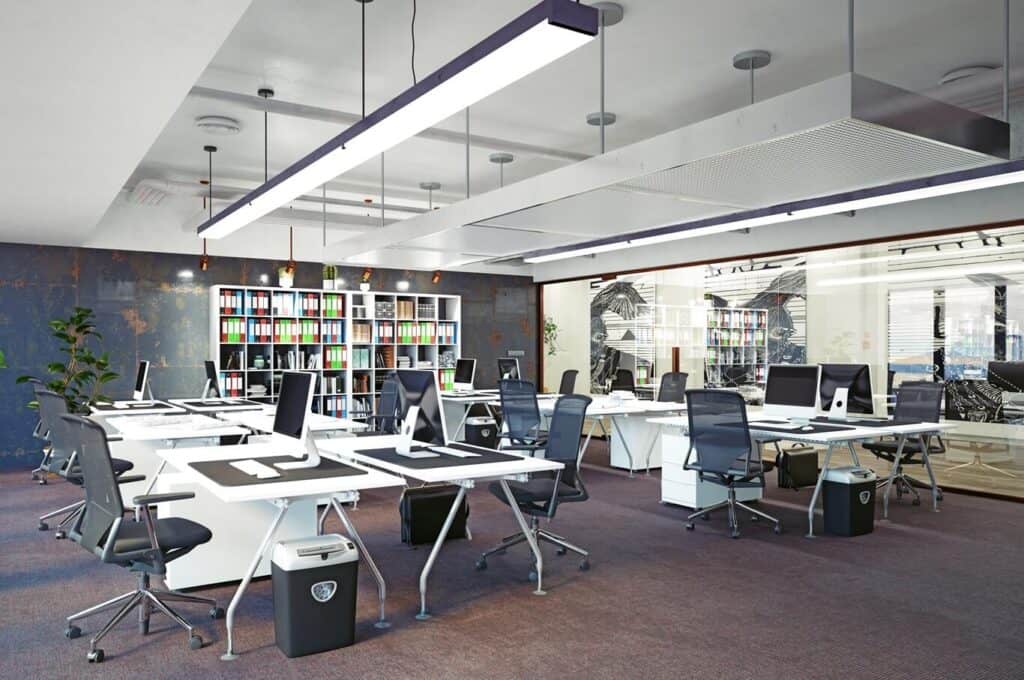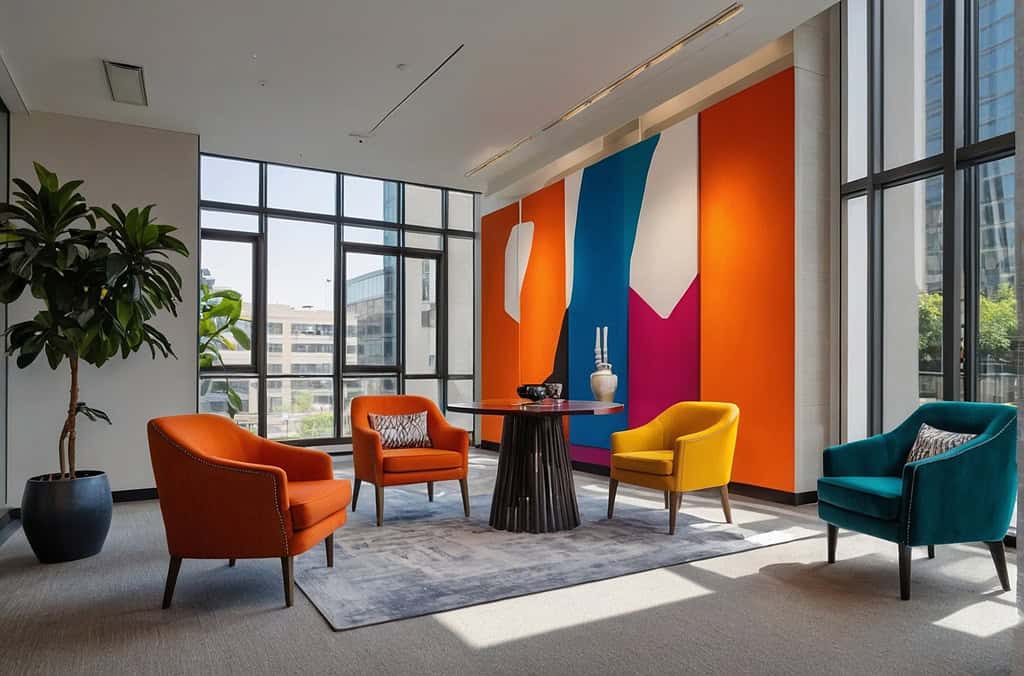Acoustics in office space interior design refers to the study and management of sound within the work environment. It involves designing and arranging the physical elements of a space to control how sound is generated, transmitted, and received.
The goal is to create an environment where sound contributes positively to the working experience, fostering productivity, communication, and overall well-being.
Importance of Acoustics In Office Space Interior Design:
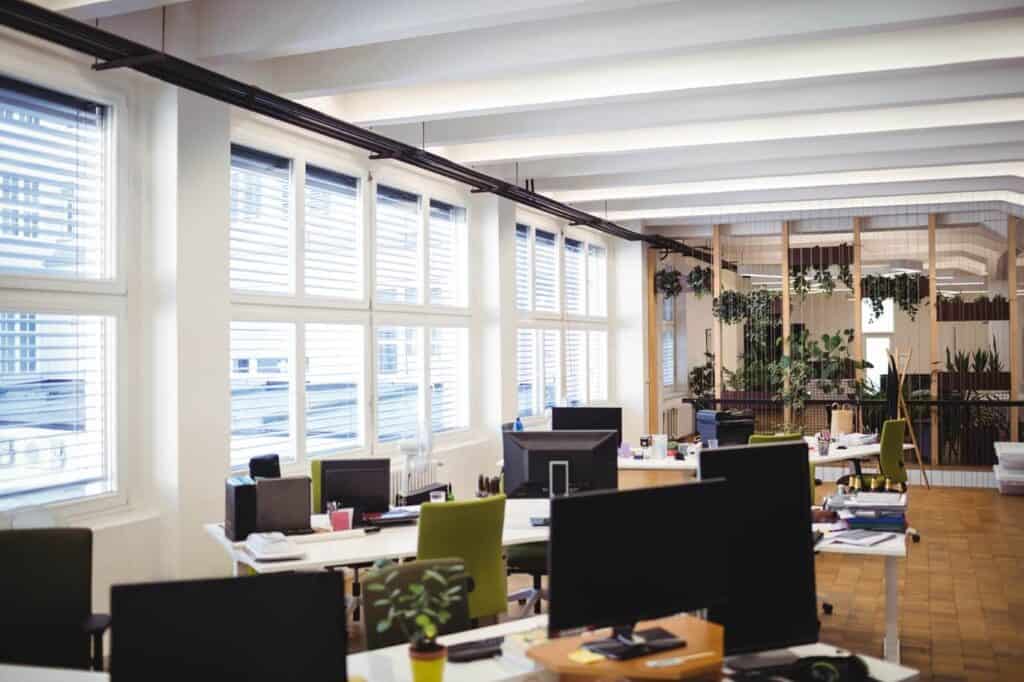
Enhanced Communication: Good acoustics facilitate clear communication by reducing background noise and minimizing the need for raised voices. This is particularly important in open-plan offices where many people work in close proximity.
Improved Concentration: A well-designed acoustic environment promotes a quieter atmosphere, allowing employees to concentrate on their tasks without being constantly interrupted by surrounding noise.
Increased Productivity: Reduced distractions and improved concentration contribute to higher levels of productivity. Employees can complete tasks more efficiently when the acoustic environment is conducive to focused work.
Employee Well-being: Excessive noise can lead to stress and discomfort. By managing acoustics, employers contribute to a healthier work environment, positively impacting the well-being of their employees.
Meeting Privacy Needs: Acoustics play a crucial role in meeting room design, ensuring that confidential discussions remain private and undisturbed by external sounds.
In conclusion, acoustics in office space interior design is a comprehensive approach to managing sound to create an environment that supports effective communication, enhances concentration, and promotes overall employee satisfaction and well-being.
Employers who prioritize acoustics contribute to a more productive and positive workplace experience for their staff.
The Impact of Poor Acoustics in Office Spaces: A Disruptive Symphony
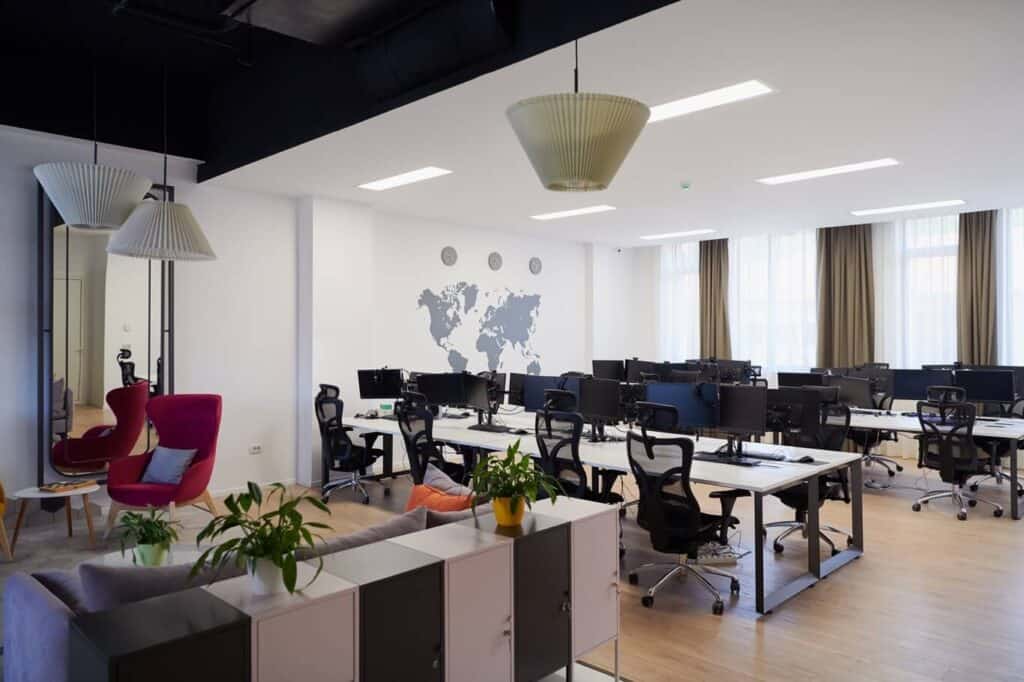
Poor acoustics in office space interior can have a profound and often negative impact on both the working environment and the well-being of employees. When sound is not effectively managed, it can lead to a cacophony of issues that hinder productivity, communication, and overall job satisfaction.
1. Distractions and Reduced Productivity
Constant Noise: Excessive background noise, whether from conversations, ringing phones, or office equipment, becomes a persistent distraction. Employees find it challenging to focus on tasks, resulting in decreased productivity.
Inability to Concentrate: Poor acoustics make it difficult for individuals to concentrate on their work, leading to frequent interruptions and a fragmented workflow.
2. Negative Effects on Employee Well-being
Increased Stress: Continuous exposure to noise can elevate stress levels among employees. This heightened stress, in turn, may lead to decreased job satisfaction and overall dissatisfaction with the working environment.
Fatigue: Struggling to filter out background noise can be mentally exhausting, contributing to increased fatigue and a sense of burnout.
3. Implications for Communication and Collaboration
Miscommunication: In an environment with poor acoustics, verbal communication can be hindered. Misunderstandings may arise due to unclear conversations, impacting the quality of teamwork and collaboration.
Reduced Meeting Effectiveness: Meeting spaces with inadequate acoustics may lead to difficulty in hearing and comprehending discussions. This can diminish the effectiveness of team meetings and hinder decision-making processes.
4. Negative Impact on Employee Satisfaction and Retention
Diminished Job Satisfaction: The constant struggle to work in a noisy environment can contribute to decreased job satisfaction, leading employees to feel less valued and appreciated.
Retention Challenges: Employees may be more inclined to seek alternative work environments with better acoustic conditions, contributing to challenges in employee retention for the organization.
5. Health Concerns
Increased Health Issues: Prolonged exposure to poor acoustics can result in health issues such as headaches, elevated blood pressure, and increased stress-related illnesses.
Mental Health Impact: The cumulative effect of noise on mental health can contribute to feelings of anxiety and reduced overall well-being among employees.
In summary, the impact of poor acoustics extends beyond mere inconvenience; it can significantly affect the mental and physical well-being of employees, hinder effective communication, and lead to decreased job satisfaction and productivity. Recognizing the importance of managing acoustics is crucial for creating a positive and conducive working environment.
Creating Effective Open Office Space Designs
Designing an open office space interior design with effective acoustics requires a thoughtful and strategic approach. Balancing the need for collaboration with the necessity for focused work is essential. Here’s a guide to help create the best acoustics in an open office space interior design setting:
1. Conduct a Noise Assessment
Identify Sources: Pinpoint the primary sources of noise in the office, including equipment, conversations, and external factors. Understanding the specific challenges will guide your acoustic design decisions.
2. Choose Suitable Materials
Acoustic Panels: Integrate sound-absorbing materials like acoustic panels on walls and ceilings. These can be designed to complement the overall aesthetic of the space while effectively dampening sound.
Carpeting and Rugs: Use carpets or rugs to cover hard flooring surfaces, reducing sound reflections and footsteps’ impact noise.
3. Optimize Furniture Selection
Strategic Placement: Arrange desks and workstations strategically to create natural sound barriers. Avoid placing workstations in direct paths of high-traffic areas.
Furniture with Acoustic Features: Invest in furniture designed with acoustic properties, such as sound-absorbing materials or built-in dividers.
4. Introduce Soft Furnishings
Curtains and Drapes: Incorporate curtains or drapes on windows to minimize outside noise and reduce reverberation within the office.
Cushions and Upholstery: Choose furniture with padded seating and consider adding cushions or upholstery to absorb sound.
5. Designate Quiet Areas
Quiet Zones: Create designated quiet areas where employees can retreat for focused work or confidential conversations. These areas can be designed with additional soundproofing elements.
Phone Booths: Install soundproof phone booths for private calls, reducing noise disruption in the open workspace.
6. Implement Sound Masking Systems
White Noise or Sound Masking: Introduce subtle background noise through sound masking systems. This can help drown out distractions and create a more consistent acoustic environment.
7. Utilize Plants
Greenery: Incorporate plants strategically, as they can act as natural sound absorbers. Greenery not only enhances the aesthetic but contributes to a more calming acoustic atmosphere.
8. Encourage Headphone Use
Personal Sound Control: Encourage employees to use headphones for individual tasks, allowing them to control their auditory environment and minimize external distractions.
9. Educate Employees
Awareness Programs: Educate employees on the importance of maintaining a considerate noise level. Foster a culture of respect for colleagues’ need for concentration.
10. Regularly Assess and Adjust
Flexible Solutions: As the office space interior design evolves and grows, regularly reassess the acoustic landscape. Be flexible in adjusting elements to meet the changing needs of the workspace.
By carefully integrating these elements into the open office space interior design, you can create a balanced and effective acoustic environment that enhances productivity, supports collaboration, and contributes to overall employee well-being.
You Can Create Open Office Space Interior Design With Officebanao
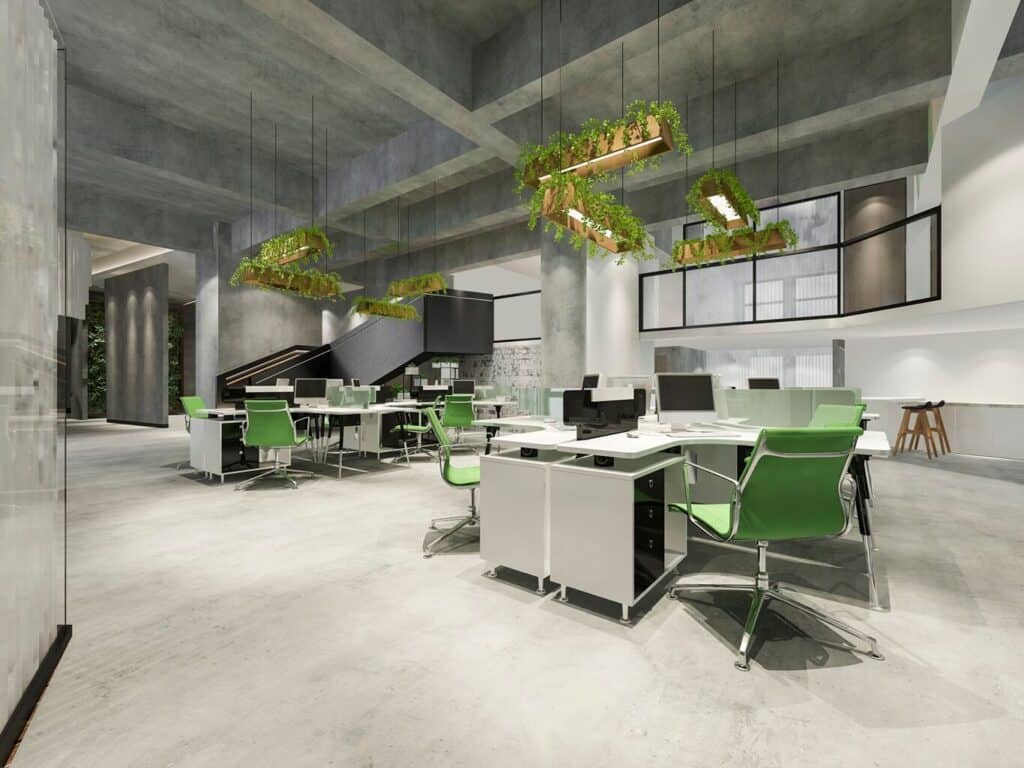
If you want to transform your office into a creative office room design, you can rely on Officebanao’s office interior designer. We are the best office interior designers who can create office interior design plans for you.
We have developed our own technology and gained extensive experience in creating contemporary office wall design. Our focus is on providing tailor-made solutions for office interior design for small offices that match your brand identity and business goals.

